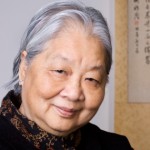Television coverage of the 2008 Olympic Games in Beijing, China, has been plentiful, but much can still be learned from the culture of the country, a Kansas State University specialist said.”Exploring aging in China can offer ideas for America’s population,” said Deb Sellers, Kansas State University Research and Extension specialist on adult development and aging.
As a gerontologist curious about how Chinese families care for – and interact with -older adults, Sellers traveled to China with more than 20 others with an interest in aging. They were attending the American Society on Aging’s Seminar held in Beijing in May 2007.
Why China?
According to the U. S. Department of State, 1.3 billion people live in China. Eleven percent of the population -144 million people – is age 60 or older. That means China is home to about 20 percent of the world’s population ages 60 or older, Sellers said.
The itinerary for the experiential seminar focused on China’s older adults, the opportunities available to them, and the facilities and plans in place to serve them, she said. The experience also provided opportunities for the participants to interact with medical professionals, educators, government officials and older adults.
During the educational trip, Sellers observed cultural contrasts that she believes offer such take-home ideas as:
* In China, women are required to retire at age 55; men must retire at age 60. In jobs that require physical labor, women retire at 50 and men at 55.
“Retiring older workers helps to create job opportunities for the growing population of about 1 million younger workers,” said Sellers, who also noted an apparent lack of discussion pertaining to the gender difference in the mandatory retirement ages.
Displaced workers are encouraged to enroll in low-cost educational opportunities ($8 tuition per semester) available at more than 26,000 senior universities, so they can explore and develop new interests to fill the remaining decades of their lives, she said. More than 47,000 recreation and activity centers also are available to serve older adults.
* Reverence for older adults in the family has traditionally been aligned with the Chinese culture, but social attitudes are changing, Sellers said. More older adults are living alone and separate from their families. While the subject of “abandonment” and the breakdown of these traditional values were broached during discussions, legislation introduced in 1996 focused on the rights of older adults and family caregiving. The legislation urges families to sign a support contract, defining their intent to provide for older family members.
* Long-term care is gaining attention in China, at least in part due to these familial changes. There now are about 40,000 such institutions in China. An obvious difference from American facilities, however, is that retirement center staff may live at the retirement facility and are on-call.
* Traditional Chinese medicine (TCM) offers a holistic approach to wellness by addressing nutrition, lifestyle, emotion, physical activity and mental fitness.
“Prevention and wellness are emphasized,” said Sellers, who noted that the physical activity vital to a healthy lifestyle is part of everyday life there.
“Rather than go to a gym, residents in Beijing may ride one bicycle to the train station and then pick up a second bicycle they store at their stop so they can bike the rest of the way to work,” she said.
Sellers also observed major differences in the treatment of disease: “A prescription is individualized to each person,” she said. “The hospital that we visited in Beijing has the country’s largest pharmacy. About 12,000 bags — or 4 tons — of medicine leave that pharmacy every day.”
The trip was a first for Sellers, who believes that studying other cultures and developing a more global perspective can generate ideas that may lend themselves to refining the programs and services that serve older adults and families in the larger world.
 Source: Kansas State University Research and Extension

